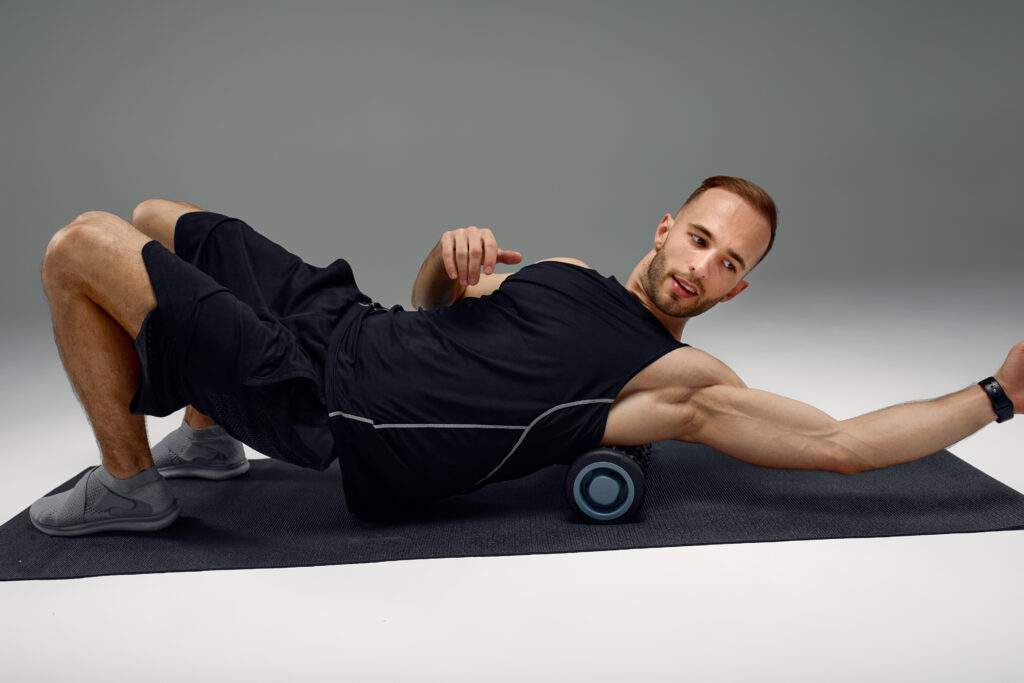Have you ever tried using a foam roller at home or in the gym? There is mounting evidence showing foam rolling on a regular basis offers a surplus of health benefits. The good news is those benefits can be enjoyed by doing just a few minutes. Let’s take a look at what the research shows on this topic.
Benefits of a Foam Roller
A recent article in the New York Times looked at the benefits of using a foam roller. In theory, rolling out a muscle using a stiff, round piece of foam offers similar benefits to massage according to the article. “Much like massage, foam rolling uses friction to release tension and realign the fascia,” said Cedric X. Bryant, president and chief science officer at the American Council on Exercise.
A recent systematic review, involving 49 studies, concluded that foam rolling for 90-120 seconds at a time “often reduced muscle stiffness and increased range of motion, or the ability of joints to move.” Other small studies have found foam rolling has the potential to improve flexibility, or the ability of soft tissues to lengthen, at least in the short-term.
Additional Research
Longer-term studies have also found that rolling out the hamstrings three times per week for four weeks improved flexibility. Four additional studies have examined the effects of foam rollers on range-of-motion (ROM) with positive findings. MacDonald and colleagues reported knee joint ROM increased by 12.7 percent following two one-minute sessions of quadricep foam rolling.
Foam Roller Technique
Many people find using a foam roller somewhat intuitive when they initially get on the floor and try it. As a general rule of thumb, start with larger muscle groups, like the legs and hips. Roll out the front of your thighs before moving to your hips, then turn over and roll the hamstrings and glutes. Next, move to your lower leg. Remember to roll both the anterior and posterior aspects of the lower leg. Once done, move on to the back and then the rest of the upper body if needed. Some find it easier to target the back after working the hamstrings so you don’t have to reposition the body.
When rolling out, move at a speed of about one inch per second for each muscle group. When you come across an area that is tight, you’ll know it. Spend more time on those restrictive areas. You may also want to try to hold your position when you come across such an area. This will help to release the tight fascia. Hold the position between 30-seconds and a few minutes before moving on. Some mobility experts, like Dr. Kelly Starrett, suggest working each leg for up to 10-minutes.
The research reported here shows foam roller use for even a few minutes a day can lead to positive changes in ROM, flexibility and muscle and fascia. Therefore, it would be prudent to add in a few minutes of rolling before or after your workouts. Drinking more water will also help if your fascia is tight or what some physical therapist refer to as “sticky.”
Stay Strong Together
Jefit, named best strength app by Sports Illustrated, Esquire, GQ, Men’s Health, Greatest, Forbes Health, and many others. It offers a community responsible for 92,000,000 workouts to date! The app, which recently passed 10 million downloads, comes equipped with a customizable workout planner and training log. The app has ability to track data, offer audio coaching cues, and can share workouts with friends. Visit our members-only Facebook group. Connect with like-minded people, share tips, and advice to help get closer to reaching your fitness goals.
- Why Lifters Choose JEFIT App for Real Strength Gains - December 3, 2025
- Nutrition Trends Bodybuilders are Talking About in 2025 - November 26, 2025
- Smart Strength Training Backed by Jefit Data - November 19, 2025
